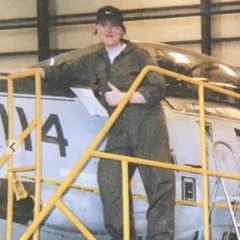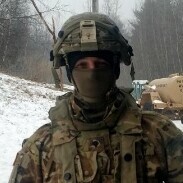Search the Community
Showing results for tags 'drag'.
-
Going to start with the 190s. It seems that the gear drag is not significant enough when the gear come down. Of all the warbirds, the 190s both are among those with the biggest increase in exposed surface area when down. 190A8, one gear down: -6 knots lost to top speed at SL 190A8, both gear down: -20 knots lost to top speed at SL As you can see, not just is there a pretty minimal speed (and presumably drag increase) loss, but it's not evenly divided between each gear. The drag does not double, but over triple when the second gear leg is dropped. This is also the same case, and same numbers with the 190D9. -6 knots lost with one gear down, -20 knots lost from top speed with both down. Now that you know how this is being done... P51, one gear down: -27 knots from top speed at SL (3000RPM, 61") P51, both gear down: -38 knots from top speed at SL Just like with the 190, the drag is not consistent. However this time, instead of increasing x3.3 when a second gear leg is dropped, it only increases by x1.41. Now here is where it gets insane... Spitfire, both gear down: -65 knots from top speed at SL (3000RPM, max allowed boost) I cannot try with both gear down, as I'm limited by the options in the preset failures list in the Mission Editor. I can only drop both gears, or none at all. Regardless, the speed lost is incredible, especially compared to the 190s. 1.42 ATA Bf 109K-4, both gear down: -83 knots from top speed at SL As if the Spitfire had it bad enough. But same as the Spitfire, I cannot drop a single gear leg due to limits in the ME. Bottom line is, the apparent drag changes when undercarriages are dropped does not look consistent at all. While the 190s and 51 (and perhaps 47, but this is an aircraft I do not own currently) have the biggest undercarriages that would present the biggest profile changes when down, get off rather lightly. In fact, when I drop single gear legs in the 190s, I barely even feel any adverse yaw. I almost don't need to make any slip corrections. Meanwhile, the aircraft that have the smallest undercarriages, and the smallest changes to their profile and presumably drag when dropped...get hit the hardest by the drag! I'd think some virtual CFD testing with the models gear up and down would yield some results, but that's my hopeful idealist thinking.
-
Hello, I would like to know whether or not allowing 3rd party developers like Heatblur to assign specific drag indices for specific stations is something that is being worked on. I do not know whether ED themselves are able to do this for their own modules but I certainly know that HB has so far not been able to do so for the F-14 module. The tunnel/belly stations should produce very little drag according to their CFD, in any case it should be much less than a Phoenix/Sparrow hanging off the glove pylons. This has caused situations where Tomcats were and still are unable to get up to "realistic" speeds with conventional loadouts such as 4x tunnel mounted AIM-54, 2 glove mounted AIM-7 and 2 glove mounted AIM-9. I'm not aware of any previous threads regarding this matter but I'm sure there have been a few people who requested this before me. I simply want to know whether or not this is in the works. You can probably see why this is somewhat of an important issue to address with the F-14's whole purpose being a long range interceptor and whatnot, you would currently have to go to extreme lengths and forego the NATOPS profiles to reach decent Mach numbers with the above specified loadout. Thank you
-
As in the title. Players might as well never close the canopy if it costs no speed to them, and only gives more visibility. Same with the P-51. P-47 and Spitfire do have some additional drag, but it's extremely little, only costing a handful of knots of top speed at SL. The drag from an open canopy should probably be a lot higher for those. canopy drag test.trk
-
When opening the canopy, it has little or perhaps no additional drag. So players might as well fly around with their canopy always open if it never slows them down. Test is performed by flying at mil power at SL with canopy closed for a couple minutes. Then pull a loop, open the canopy, and continue flying at power at SL. Test also contains the Spitfire, FW190A, and P-47. canopy drag test.trk
-
All charts are sourced from SFI AJ 37 del 3, 1979 print. Test flights were flown in ISA, using weights as close as possible to those described for each loadout (remembering that the AJS is somewhat heavier than the AJ), either start weight or flight weight depending on what the chart in question described. LEVEL ACCELERATION Tests were run at 0km, 6km, and 11km in ISA conditions only. Each test included two runs (one by myself, one by Airhunter) with clean config/rent FPL. In addition, I ran a second set of 0km tests with a group 3 loadout (4x ARAK + XT), and 6km tests with a group 4 loadout (4x SB + XT). Two tests were run at 11km with the loadout stipulated in the manual, one by myself and one by Airhunter. Airhunter provided me with tacview files and graphs which I then charted against the manual (obviously only for the clean config 0km and 6km tests, and the 11km test). On my own end I forgot to save tacviews, but did save trackfiles, which are attached as well. The results show what I'd found myself: At sea level, mil thrust is maybe a touch slow to accelerate to M 0.9 but is still relatively close, and zone 3 is tuned almost on the dot. Zone 1 and 2 show discrepancies, particularly zone 1, although they aren't very large at this altitude. Excuse the rather unscientific graphs, but unfortunately just overlaying the ones from tacview wasn't really workable and I'm working with what I've got here: At 6km alt, mil thrust gradually diverges from the chart, ending up a little slower than expected. Zone 1 and 2 show large discrepancies. Zone 1 follows zone 2's curve, zone 2 follows zone 3's curve, and zone 3 is doing something else entirely. At 11km alt, only zone 3 was tested. The results were very far off the expectation: according to the chart, level acceleration from M 0.9 to M 1.6 should take about 5 minutes and 45 seconds. In the sim, this was achieved in just one minute (!), while acceleration from M 0.9 to M ~1.63 (as far as the line is drawn) should take about 7 minutes and 15 seconds, while in DCS it took 1 minute and 15 seconds. This is a very large discrepancy even compared to the aircraft's own charts, but also compared to acceleration profiles of other aircraft known to have phenomenal performance in this area (F-104, MiG-23, MiG-29). Something is clearly causing an issue here but I don't know what. Big thanks to Æck for spotting this one during a MP session and bringing it to light - I wouldn't have thought to test it otherwise. Finally for now, THRUST/DRAG EQUILIBRIUM SPEEDS AT SEA LEVEL This has been something I've been meaning to report for a while, but invariably by the time I got trackfiles, DCS would update and break them. As a result I'll just post the results of my testing now and drum up the trackfiles when I get time. Please note that this is separate to, but was compounded by, the now-fixed drag issues with Sidewinder launch rails. Each test was run using the circled loadout group from the AJ 37 loadout tables - so rent FPL was clean, group 1 was KA-24-XT-24-KB, group 2 was KA-24-XT-blank-04, group 3 was RA-RA-XT-RA-RA, group 4 was SB-SB-XT-SB-SB. All loadouts except group 4 (bombs) reach thrust/drag equilibrium above the intercept of MAX ZON 3 lines and thrust/drag lines, some significantly so. Group 4 is slightly slower than expected, the clean airframe flies beyond even SAAB's estimate for a world speed record using a stripped and polished modified aircraft, groups 1 and 2 are beyond the aircraft's Vne and fall off the chart, and group 3 (which should be the slowest according to the chart - just barely subsonic, likely due to the rocket pods generating enormous amounts of transonic drag compared to anything else tested) is sitting slightly above the aircraft's Vne. It seems drag values need looking at. I don't have trackfiles handy for these tests (the ones I did have are now several DCS patches old), but I do have tacviews for them. I can get tracks again if necessary. I haven't checked climb performance yet, but hopefully there won't be anything to add for that. OWN TRACKFILES.zip Tacviews from Airhunter.zip drag tests.zip
- 23 replies
-
- 21
-

-

-
- drag
- flight model
-
(and 4 more)
Tagged with:
-
Too many times I want to SEE the drawing but I don't want it to be selectable in the Mission Editor. The only way I know to prevent accidental mouse grabs (and the obvious lack of UNDO here rears it's head again) is to turn that drawing OFF, but then, I can't see it. This is especially annoying when drawing areas of enemy detection or patrol areas, but still wanting to draw borders or other information inside of the area. A miss hit with the mouse 'grab' will grab the area and move it. Meaning aligned things are now misaligned. A simple 'lock layer' or padlock either in the 'Figures' table or in the Draw Panel for that drawing would suffice.
-
- mission editor
- drawing
-
(and 3 more)
Tagged with:
-
edit: My bad, my post was unclear. Im specifically talking how the addition of stores affects the top speed of the F-18. Im not talking about fuel economy, which I have not compared. -------- Not saying anything is wrong or unrealistic, I would just like to understand why this is. I know the F-18 is more draggy than an F-16, and has somewhat weak engines. But the way stores add drag to the plane seems counterintuitive to me, and I wonder if someone can explain it. Below im triyng to explain my train of thought: So you put stores on an F-18, even a single fuel tanks, and it already lowers top speed by a good chunk. Put 4x Aim-120 with the double rack, and youre down even further. At this point it already can be tricky to even get supersonic, maybe impossible to get past the transonic region. Similar story with bombs and other kinds of addons. Yet with any other plane I tried, F14, FC3-planes, Mirage-2000, Mig-21, Ive never seen such a heavy effect of drag. For example, the F-16 handles a lot worse with three fuel tanks and 6x missiles, but its top speed isnt really affected much. Acceleration is slower, but you can go close to mach 1.8 or so at ~30-40k feet, last time I tried it. Even if you dont use full afterburner (which ofc is very high capacity), the speed seems to remain higher. And consider the difference in drag: An F-16 by itself is a lower drag plane than an F-18, but logically I would then assume that the same drag+weight bomb load would have a more adverse affect on the F-16 then, compared to the F-18. Because percentage wise (Im making up numbers), the F16 drag might go up by 20%, but the F18 drag only goes up by 10%. Similar story with weight. Yet the F18s speed seems to go down so much more than the F16s speed. Can someone explain why the Hornet is slowed down this much more by stores? Or do I have more fundamental misconceptions here?
- 26 replies
-
- aerodynamics
- drag
-
(and 1 more)
Tagged with:
-
One of the folks in our squad (Royal Waffles) found this...you can load bombs, then take off WITHOUT adding them to PACS (A2G Armament) and the jet will fly as if it is clean (achieving M1.5+), then while in flight, if you add the bombs to PACS, the jet will suddenly slow down, which suggests that the drag of the bombs is not modeled until they are identified in the armament page. This video shows the F-15E at M1.53, then when the CBUs/etc are entered into the armament page, the speed begins to decrease without any adjustment to the throttle. This can be exploited by flying to the AO "drag free", then entering the armament just before attacking, saving fuel/etc.
- 2 replies
-
- 5
-

-

-
- drag
- flight model
-
(and 1 more)
Tagged with:
-
Hi Drivers and Developers, Would there be a potential feature of allowing a click-and-drag field over a wide area on the map to select AI and Static Objects simultaneously? Figured we could use it to mark off units to hide or remove easily, change nationalities/coalitions, move forces in any direction like desktop shortcuts, and even add tasks to units that use the same ordinance towards a single area. What do y'all think? - Toffee







